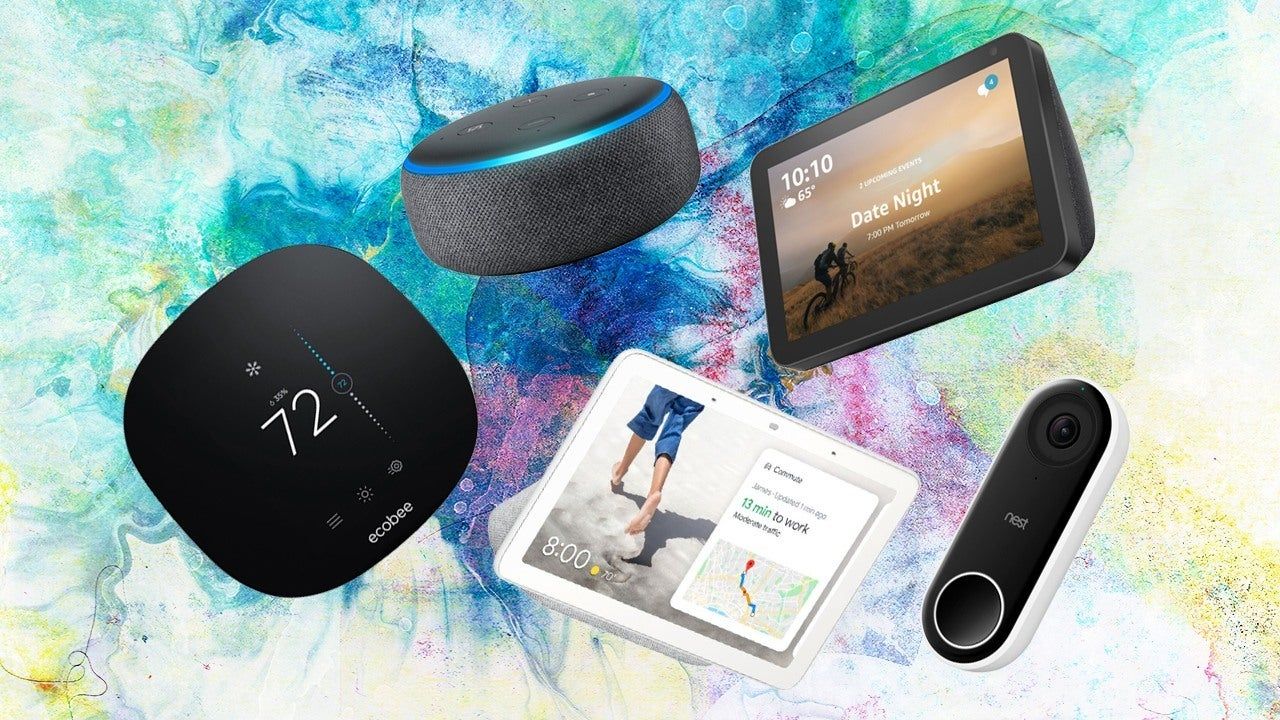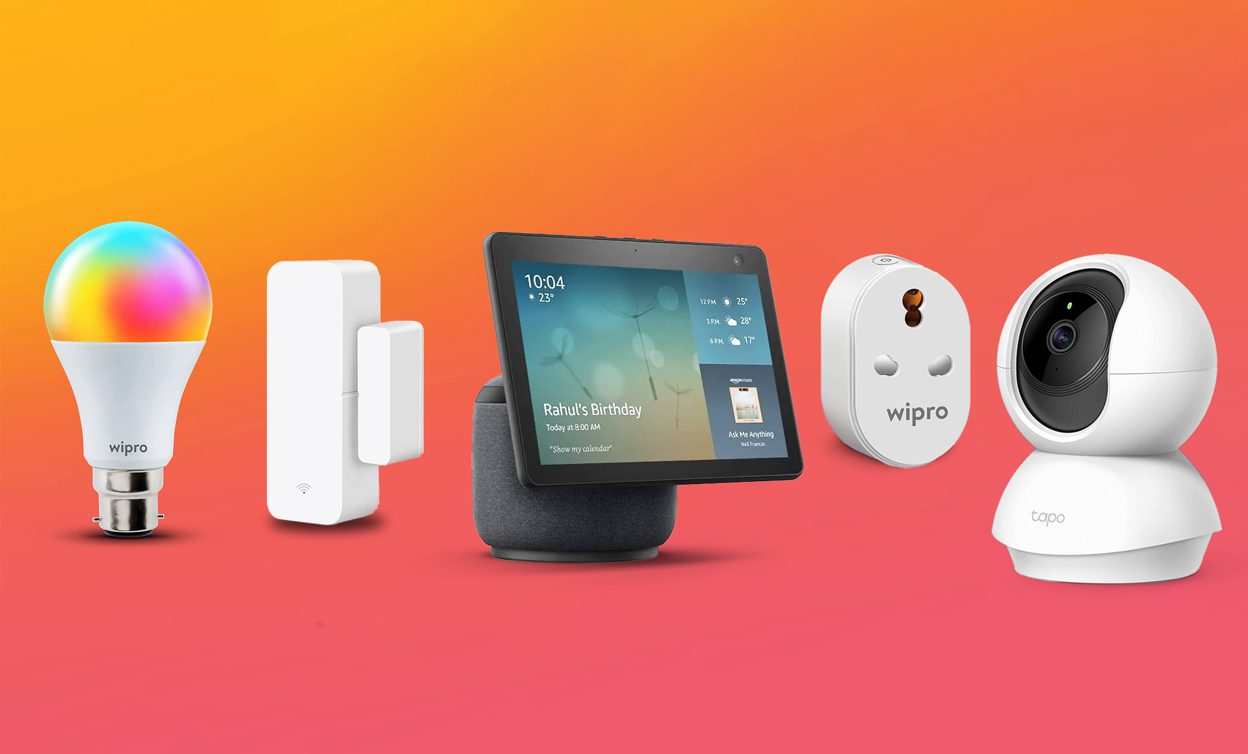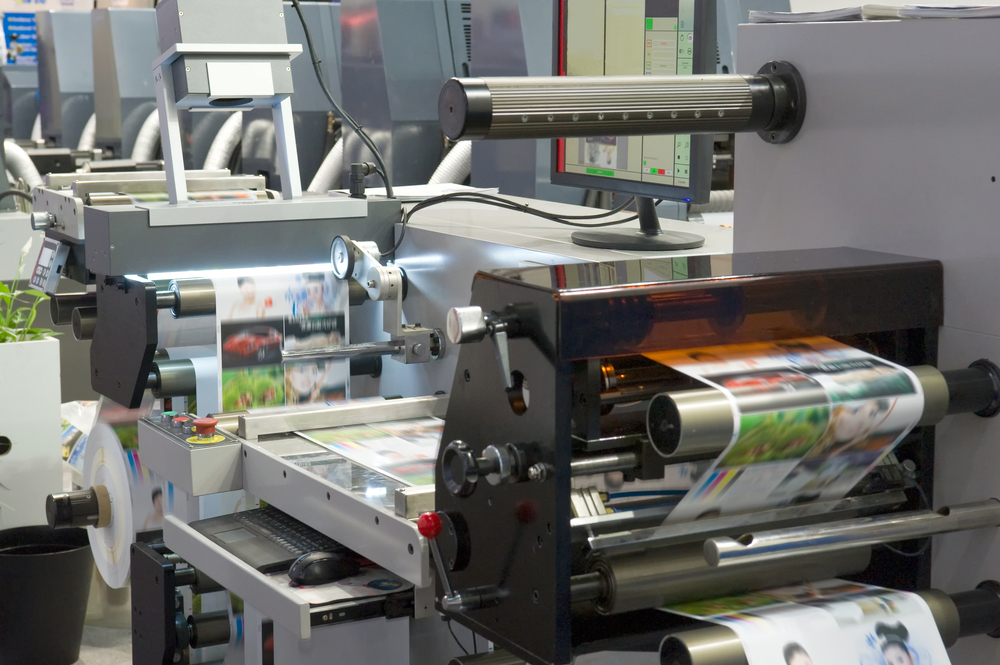Smart Devices
Smart devices are electronic devices that can connect to the internet and be controlled remotely. They are often equipped with sensors, cameras, and other features that allow them to collect data and interact with their surroundings.
Smart devices can be used for a wide variety of purposes, including:
- Home automation: Smart devices can be used to control lights, thermostats, door locks, and other home appliances.
- Personal productivity: Smart devices can be used to track fitness, manage schedules, and stay organized.
- Entertainment: Smart devices can be used to stream music, watch movies, and play games.
- Security: Smart devices can be used to monitor homes and businesses for security breaches.
Types of Smart Devices
There are many different types of smart devices available, including:
- Smartphones: Smartphones are mobile phones that can run apps and connect to the internet.
- Smart TVs: Smart TVs are televisions that can connect to the internet and stream content.
- Smart speakers: Smart speakers are speakers that can be controlled by voice commands.
- Smart thermostats: Smart thermostats can be controlled remotely and learn your heating and cooling preferences.
- Smart door locks: Smart door locks can be opened and closed remotely using a smartphone app.
Benefits of Using Smart Devices
There are many benefits to using smart devices, including:
- Convenience: Smart devices can make your life easier by automating tasks and giving you remote control over your home and devices.
- Energy efficiency: Smart devices can help you save energy by optimizing your home’s heating and cooling systems.
- Security: Smart devices can help you keep your home and family safe by monitoring for security breaches and deterring intruders.
- Entertainment: Smart devices can provide you with endless entertainment options, including streaming music, watching movies, and playing games.
Drawbacks of Using Smart Devices
There are also some drawbacks to using smart devices, including:
- Cost: Smart devices can be expensive to purchase and maintain.
- Security risks: Smart devices can be hacked, which could give criminals access to your personal information or control over your home.
- Privacy concerns: Smart devices collect data about your usage habits, which could be used to track your movements or target you with advertising.
- Complexity: Smart devices can be complex to set up and use, especially for people who are not tech-savvy.
Smart Devices in the Home
Smart devices have become increasingly popular in recent years, and for good reason. They can make our lives easier, more convenient, and more enjoyable. In the home, smart devices can be used to automate a wide range of tasks, from turning on the lights to adjusting the thermostat.
They can also be used to control entertainment systems, security systems, and even our appliances.
Benefits of Smart Home Automation
There are many benefits to using smart devices for home automation. Some of the most notable benefits include:
- Convenience:Smart devices can make our lives easier by automating tasks that we would otherwise have to do manually. For example, we can use smart plugs to turn on our lights when we enter a room, or we can use smart thermostats to adjust the temperature in our home without having to get up.
- Energy efficiency:Smart devices can help us save energy by automatically turning off lights and appliances when they are not in use. They can also be used to monitor our energy consumption and identify areas where we can save.
- Security:Smart devices can help us keep our homes safe by deterring burglars and monitoring for fires and other emergencies. For example, we can use smart security cameras to keep an eye on our property, or we can use smart smoke detectors to alert us to a fire.
- Entertainment:Smart devices can make our homes more enjoyable by providing us with access to a wide range of entertainment options. For example, we can use smart TVs to stream movies and TV shows, or we can use smart speakers to listen to music.
Examples of Smart Home Devices
There are a wide variety of smart home devices available on the market today. Some of the most popular devices include:
- Smart plugs:Smart plugs can be used to turn on and off any appliance or electronic device. They can be controlled remotely using a smartphone app or voice assistant.
- Smart thermostats:Smart thermostats can be used to automatically adjust the temperature in your home. They can be programmed to learn your heating and cooling preferences and can be controlled remotely using a smartphone app or voice assistant.
- Smart security cameras:Smart security cameras can be used to monitor your property for intruders. They can be equipped with motion sensors and night vision, and they can send you alerts if they detect any suspicious activity.
- Smart smoke detectors:Smart smoke detectors can alert you to a fire in your home. They can be connected to your smartphone so that you can be notified even when you are away from home.
- Smart speakers:Smart speakers can be used to play music, control other smart devices, and get information from the internet. They can be controlled using voice commands.
Smart Devices in the Workplace
Smart devices are rapidly transforming the workplace, offering a wide range of benefits for businesses and employees alike. From automating tasks to improving communication and collaboration, smart devices are revolutionizing the way we work.
One of the most significant benefits of using smart devices in the workplace is their ability to automate tasks. This can free up employees to focus on more strategic and creative work, leading to increased productivity and innovation. For example, smart devices can be used to automate tasks such as scheduling appointments, sending emails, and managing social media accounts.
Smart devices can also improve communication and collaboration within the workplace. For example, instant messaging apps and video conferencing tools allow employees to communicate with each other quickly and easily, regardless of their location. Additionally, project management tools can help teams to collaborate on projects more effectively, by providing a central platform for sharing files, tracking progress, and communicating with each other.
There are a wide variety of smart devices that can be used in the workplace, including smartphones, tablets, laptops, and wearables. Each type of device offers its own unique set of benefits, so it is important to choose the right devices for the specific needs of your business.
Examples of Smart Devices in the Workplace
- Smartphones: Smartphones can be used for a wide range of tasks in the workplace, including communication, email, scheduling, and project management.
- Tablets: Tablets are ideal for tasks that require a larger screen, such as reading documents, watching videos, and taking notes.
- Laptops: Laptops are portable computers that offer a full range of functionality, making them ideal for employees who need to work on the go.
- Wearables: Wearables, such as smartwatches and fitness trackers, can be used to track employee activity and productivity, and to provide employees with access to information and tools without having to use their hands.
Smart Devices in Healthcare

Smart devices have become increasingly popular in healthcare, as they offer a number of benefits for both patients and providers. These devices can be used for a variety of purposes, including remote patient monitoring, medication management, and disease management.
Remote Patient Monitoring
One of the most important benefits of smart devices in healthcare is their ability to enable remote patient monitoring. This allows patients to track their own health data, such as blood pressure, heart rate, and blood glucose levels, and share it with their healthcare providers.
This information can help providers to identify potential problems early on and intervene before they become serious.There are a number of different smart devices that can be used for remote patient monitoring, including:
- Blood pressure monitors
- Heart rate monitors
- Blood glucose monitors
- Weight scales
- Activity trackers
These devices can be connected to a smartphone or tablet, which then transmits the data to the patient’s healthcare provider. This allows providers to monitor the patient’s health status from anywhere, at any time.
Smart Devices in Education
Smart devices are revolutionizing the way we learn and teach. From personalized learning to interactive simulations, smart devices offer a wide range of possibilities for educators and students alike.
Personalized Learning
Smart devices allow for personalized learning experiences tailored to each student’s needs and learning style. Adaptive learning apps track student progress and adjust the difficulty level accordingly, providing targeted support for struggling students and challenges for advanced learners.
Interactive Simulations
Smart devices bring abstract concepts to life through interactive simulations. Students can explore scientific experiments, conduct virtual dissections, and engage in immersive historical simulations, making learning more engaging and memorable.
Real-Time Collaboration
Smart devices facilitate real-time collaboration between students and teachers. Collaborative apps enable students to share ideas, work on projects together, and receive instant feedback from their teachers.
Examples of Smart Devices in Education
* Tablets:Provide access to educational apps, e-books, and interactive simulations.
Virtual Reality (VR) headsets
Immerse students in virtual learning environments for immersive experiences.
Augmented Reality (AR) apps
Overlay digital information onto the real world, enhancing student engagement and understanding.
Interactive whiteboards
Allow teachers to engage students with interactive lessons, polls, and collaborative activities.
Educational games
Gamify learning experiences, making learning fun and motivating.
Smart Devices in Retail

Smart devices are rapidly changing the retail landscape. From self-checkout kiosks to interactive displays, smart devices are being used to improve the customer experience and increase sales.
Customer Engagement
Smart devices can be used to engage customers in a variety of ways. For example, interactive displays can be used to provide customers with product information, reviews, and videos. Self-checkout kiosks can speed up the checkout process and reduce wait times.
And mobile apps can be used to provide customers with personalized offers and loyalty rewards.
Benefits of Using Smart Devices in Retail
There are many benefits to using smart devices in retail, including:
- Improved customer experience
- Increased sales
- Reduced costs
- Improved efficiency
Examples of Smart Devices Used in Retail
Some of the most common smart devices used in retail include:
- Self-checkout kiosks
- Interactive displays
- Mobile apps
- RFID tags
- Smart shelves
Smart Devices in Transportation
Smart devices are revolutionizing the transportation industry, offering innovative solutions to enhance efficiency, safety, and convenience. From traffic management to vehicle diagnostics, smart devices are transforming the way we move people and goods.
Traffic Management
Smart devices can significantly improve traffic flow and reduce congestion. Traffic sensors collect real-time data on vehicle volume, speed, and occupancy, allowing traffic managers to identify bottlenecks and optimize signal timing. Advanced algorithms can adjust traffic lights based on changing conditions, reducing delays and improving overall traffic flow.
Vehicle Diagnostics
Smart devices can provide valuable insights into vehicle performance and maintenance needs. On-board diagnostics (OBD) devices connect to a vehicle’s computer system and transmit data to mobile apps or cloud-based platforms. This information can alert drivers to potential issues, schedule maintenance appointments, and even diagnose problems remotely.
Navigation and Ride-Sharing
Smartphones and GPS devices have become indispensable tools for navigation, providing real-time directions and traffic updates. Ride-sharing apps like Uber and Lyft leverage smart devices to connect passengers with drivers, offering convenient and affordable transportation options.
Fleet Management
Smart devices can help businesses manage their fleets more effectively. GPS tracking systems allow managers to monitor vehicle locations, track fuel consumption, and optimize routing. Telematics devices provide data on driver behavior, such as speeding or harsh braking, enabling companies to improve safety and reduce insurance costs.
Examples of Smart Devices in Transportation
* Traffic sensors: Collect data on vehicle volume, speed, and occupancy
On-board diagnostics (OBD) devices
Monitor vehicle performance and maintenance needs
Smartphones and GPS devices
Provide navigation and traffic updates
Ride-sharing apps
Connect passengers with drivers
Fleet management systems
Track vehicle locations, fuel consumption, and driver behavior
The Future of Smart Devices
Smart devices are rapidly evolving, and their impact on our lives is only going to grow in the years to come. In this section, we’ll discuss the latest trends in smart device development and predict how smart devices will evolve in the future.
We’ll also share our thoughts on the potential impact of smart devices on society.
Latest Trends in Smart Device Development
- Increased use of artificial intelligence (AI)
- Development of new and innovative sensors
- Improved connectivity and interoperability
- Increased focus on privacy and security
How Smart Devices Will Evolve in the Future
We believe that smart devices will continue to evolve in several ways in the future.
- Smart devices will become more intelligent and autonomous.
- Smart devices will be able to connect to a wider range of devices and services.
- Smart devices will become more personalized and tailored to our individual needs.
- Smart devices will play a more significant role in our lives.
Potential Impact of Smart Devices on Society
The widespread adoption of smart devices has the potential to have a significant impact on society. Some of the potential benefits of smart devices include:
- Increased productivity
- Improved safety and security
- Enhanced healthcare
- Greater convenience
However, there are also some potential risks associated with the use of smart devices, such as:
- Privacy concerns
- Security risks
- Addiction
- Social isolation
It is important to be aware of both the potential benefits and risks of smart devices so that we can make informed decisions about how we use them.




